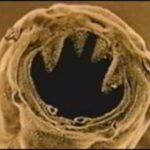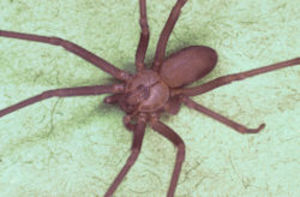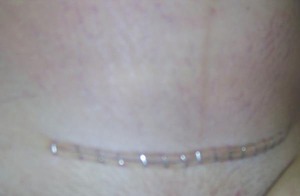Parasites can be a real nuisance to your pet, sometimes even jeopardizing their health. The hookworm is one of those parasites they could make horror movies out of. They attach to the intestinal wall of your dog with a hook-like mouth that is filled with 6 razor sharp teeth and feed off of large amounts of blood that course through blood vessels located in the wall. They are the vampires of the parasitic world.
Hookworm infestation is much more common in puppies though they do infest adult dogs as well. There is a chance that canine hookworms can be spread to humans but they are unable to fully mature in the human body. The larvae survive for a short time in humans usually only resulting in a very annoying itch and slight irritation. The hookworm’s vampiric nature and insatiable appetite for blood can prove lethal to a young puppy. Anemia is a very real problem for both puppies and dogs infested with this parasite. Blood transfusions may be necessary in animals suffering from a particularly nasty infestation.
The bone marrow in canines is responsible for producing the blood cells necessary for health and survival. In puppies large amounts of blood production is devoted to fulfilling the needs of their vital organs and internal systems as well as to the growth process. The hookworms threaten the well being of puppies by consuming the blood needed to ensure the puppy’s good health and survival.
Transmission
There are four different means by which your dog or puppy may become infected with the hookworm parasite: oral contact with infected material; skin contact with infected material; through the placental blood of a mother dog who has hookworm; and through drinking the milk from an infected mother dog. The larvae, when entering the puppy from of the aforementioned avenues, will travel to the intestines, attach themselves to the wall, and begin gorging themselves on the ample supply of blood.
Hookworm Life Cycle
The larvae of the hookworm upon ingestion travel to the intestine where they attach to the intestinal wall using their hook-like mouth and begin drinking the blood of their host.
As the parasitic worm matures in the intestine male and female hookworms begin to breed. The female hookworm then releases her eggs which are passed along with the contents of the intestine to the colon region and are deposited into the world via fecal matter. Female hookworms are known to release up to 20,000 eggs in a 24 hour period! If the ground is moist and provides the right kind of conditions the eggs will hatch into larvae within a matter of 12 to 18 hours. They are able to survive for several weeks without a food source.
While out in the external environment the hookworm eggs got through a couple of larval stages before they become infective and begin searching for a new host. Once they are ready the larvae prepare to infect an unsuspecting host that happens to travel their way. The hookworm larvae then enter the host via oral transmission, epidermal contact, placental blood transfer, or through the consumption of contaminated milk. From here they travel to the intestine to mature and repeat the life cycle.
Some hookworm larvae burrow out of the intestine and head for the lungs where they feed off of the blood in the lung tissue. These bold parasites then decide to eventually burrow their way back out of the lungs and into the trachea. The irritation that results causes the dog or puppy to cough up the parasite and then swallow them. The larvae then continue on their journey back toward the intestine to finish maturing and repeat the life cycle process.
Some of the larvae do not initially complete their quest to the intestine. They will go dormant by forming a tough, hardy cyst until they decide to reanimate and complete the process.
Treatment
Treatment includes various drugs available that can be administered via oral ingestion or injection. Side-effects are limited but since only the adult hookworms are killed it will be necessary to repeat the treatment process 2 to 4 weeks after the original dose to kill off any newly formed adult worms.
Environmental agents are also available to treat yards and other potentially infected areas for possible hookworm infestation.
Signs of hookworm infestation:
Tarry or blackened diarrhea
Bloody diarrhea
Vomiting
Lack of appetite
Pale mucous membranes
Weakness
Appearance of emaciation
Anemia
Prevention
Preventing hookworms involves beginning treatment for the parasite in puppies when they are between 2 and 3 weeks of age. The mother dog should be treated during the same time as her puppies in order to eliminate the chance of re-infestation. Removal and proper disposal of dog feces in yards, etc will help out in lowering the infection rate. Avoid allowing children to play in potentially infected sites and practice good hygiene. Speak with your veterinarian regarding further treatment and preventative measures for your dog and puppy.
Sources:
http://www.petcaretips.net/canine_hookworms.htm
http://www.petsandparasites.org/dog-owners/hookworms.html






